 |
 |
 |
| |
HPV Genotyping in a Study of Adjunctive Vaccine For Treatment of Cervical Dysplasia
|
| |
| |
CROI 2022 Feb 11-16
Grant Ellsworth
Weill Cornell Medicine
New York, NY
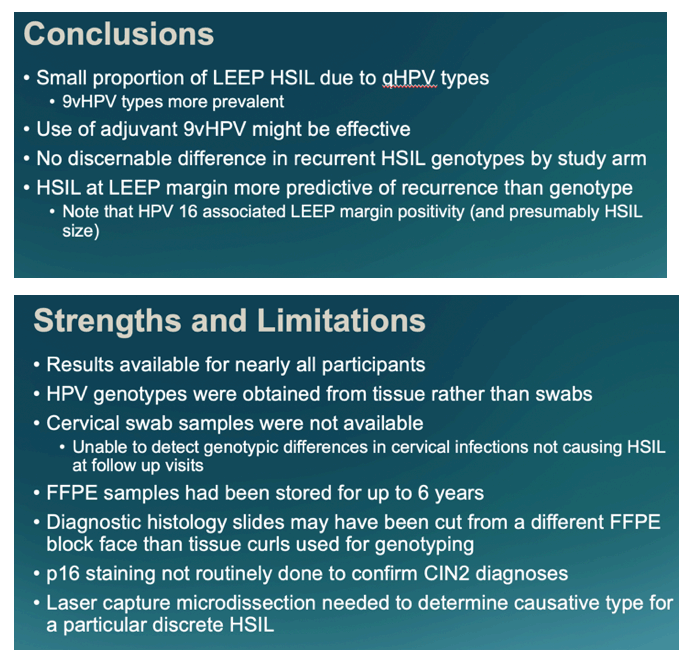
Program abstract
Background: Women with HIV have higher rates of cervical cancer, cervical high grade squamous intraepithelial lesions (HSIL) and HSIL recurrence after treatment compared to the general population. A randomized study of adjuvant quadrivalent HPV vaccine (qHPV) in South African women with HIV undergoing loop electrosurgical excision procedure (LEEP) did not improve HSIL outcomes. We sought to understand if HPV genotyping of observed HSIL to further understand the trial outcomes.
Methods: Women with cervical HSIL received qHPV at weeks 0, 4, and 26 and were treated with LEEP at week 4. All formalin-fixed paraffin embedded LEEP (week 4) specimens and recurrent cervical HSIL specimens from (weeks 26 and/or 52) were genotyped using the Atila Ampfire High Risk HPV Genotyping Assay. HPV genotypes in Week 4 LEEP specimens were related to HSIL recurrence and differences in HPV genotypes detected in recurrent HSIL specimens were compared between arms.
Results: 164 of 180 LEEP specimens had available samples and successful HPV genotyping. 46 (28%) of LEEP specimens contained HPV 16 and/or 18, 96 (59%) of LEEP specimens contained HPV types covered by the nine-valent HPV vaccine (9vHPV), and 119 (67%) had any high-risk HPV detected. Histologic HSIL recurrence after LEEP was associated with detection of HPV other than HPV 16 or 18 in the LEEP specimens when adjusted for positive LEEP margin (adjusted OR 2.9; 95% CI 1.3-6.2; p<0.01). HPV 16 and/or 18 were detected in 7 (37%) of placebo arm and 4 (18%) of qHPV arm of the week 26 specimens, HPV 16 and/or 18 were also detected 1 (13%) of each arm of the week 52 specimens. Overall there were no differences in HPV genotypes in recurrent specimens attributable to study treatment assignment (see Figure).
Conclusion: Only a minority of cervical HSIL was due to qHPV types which may have contributed to the lack of efficacy of qHPV to prevent recurrent HSIL. Adjunctive 9vHPV vaccine may offer more protection against recurrent HSIL. However, no differences were observed by arm of in the small numbers of recurrent HSIL secondary to HPV 16 and/or 18.
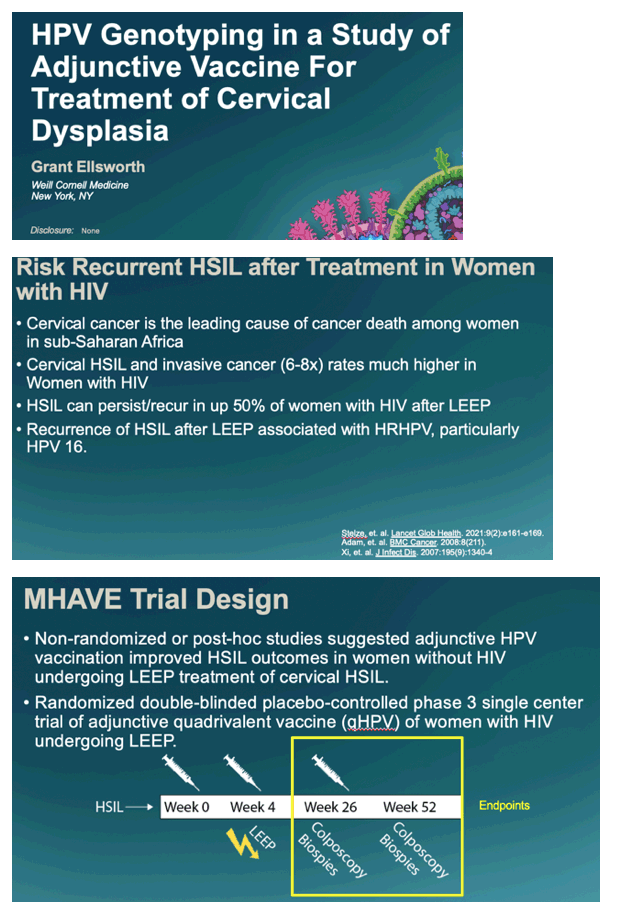
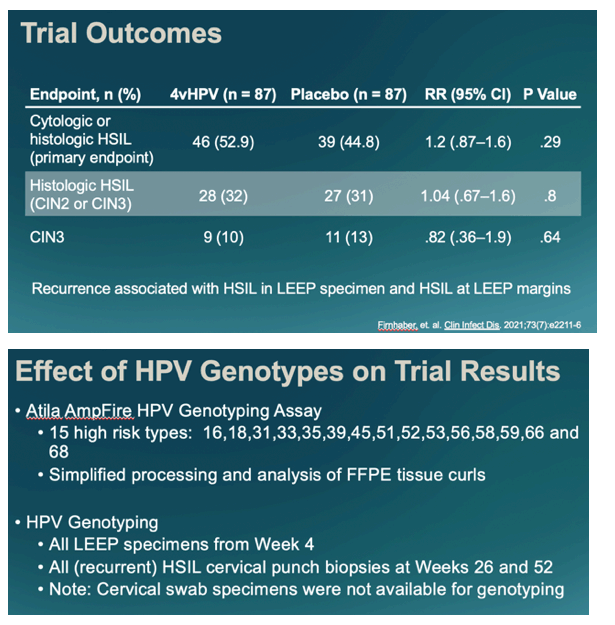
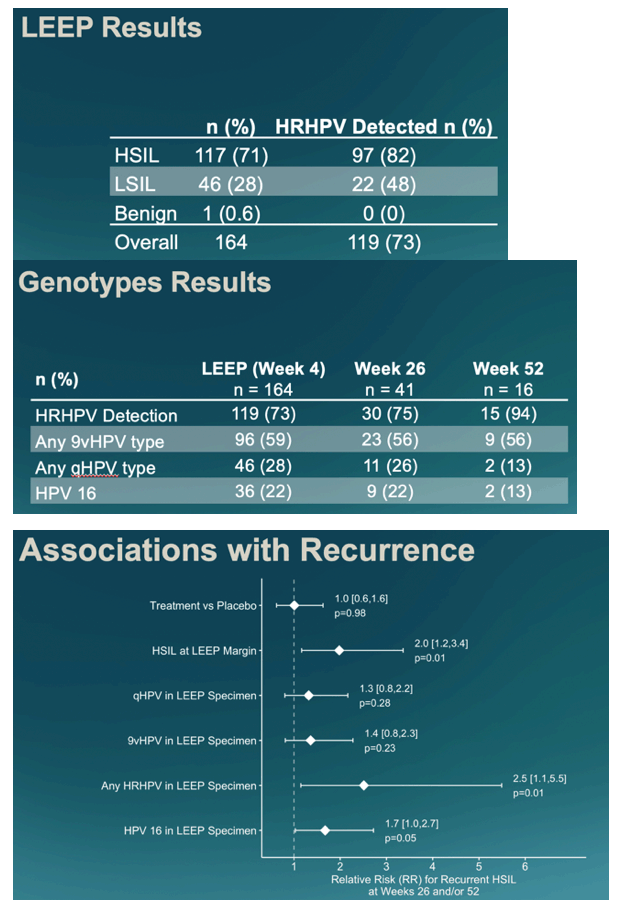
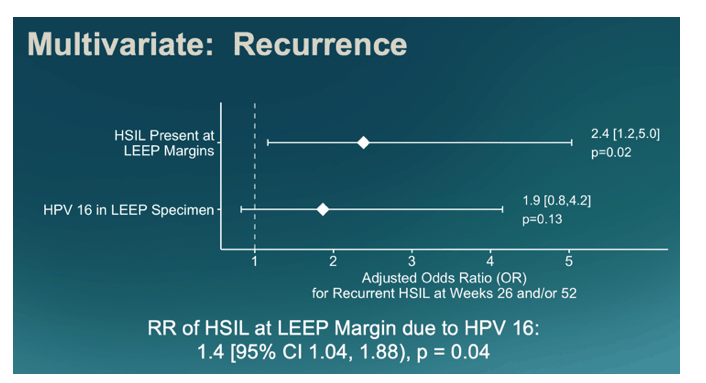
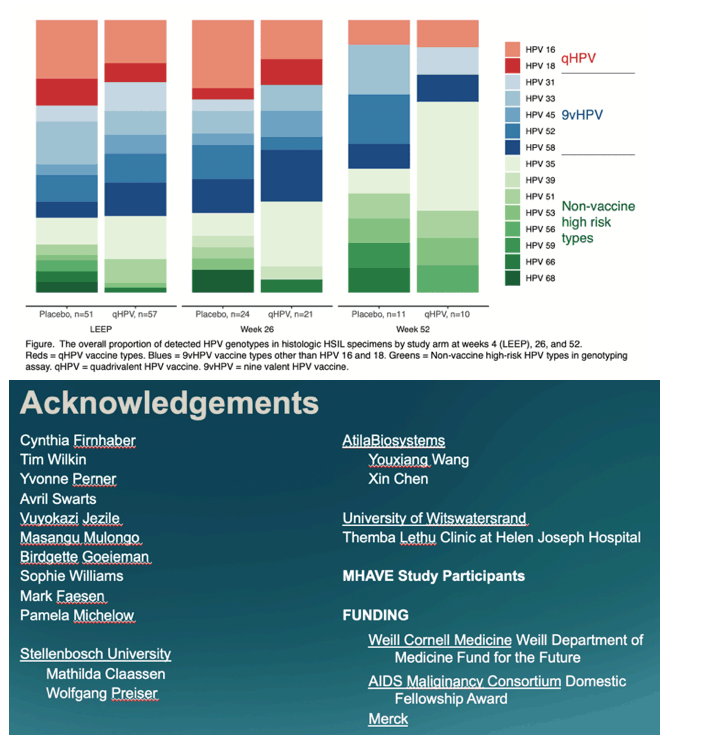
|
| |
|
 |
 |
|
|